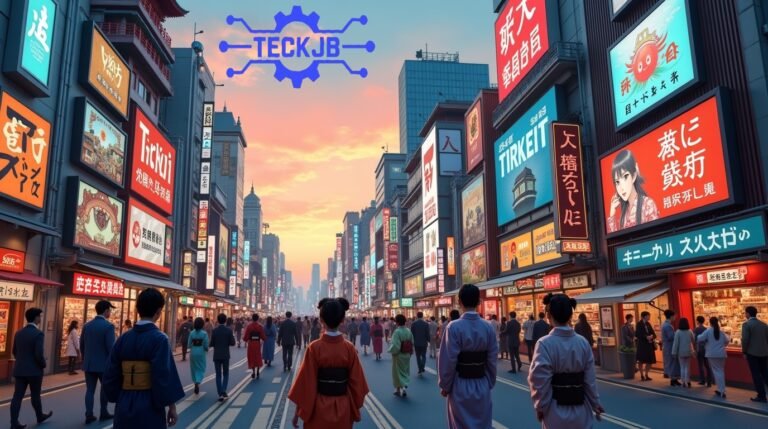Tokyo, the colorful capital of Japan, is a town wherein the past and present coexist in a persevering combination of lifestyle and innovation. Yet, few understand that in advance it modified into what is known as Tokyo, this sprawling city ended up referred to as Edo—a name that echoes with centuries of facts, way of life, and transformation. This article delves deep into the story of erstwhile Tokyo, tracing its journey from a humble fishing village to one of the world’s maximum influential cities. In this manner, we are able to discover the historical milestones, cultural shifts, and enduring legacy that outline Tokyo nowadays.
The Origins of Edo From Fishing Village to Castle Town
Long earlier than neon lighting and skyscrapers ruled the skyline, the location now called Tokyo came to be a quiet fishing village known as Edo. Archaeological proof indicates that the place has been inhabited for hundreds of years, but it changed in the overdue 12th century when the Edo prolonged family set up the village that might in the end emerge as the coronary coronary coronary coronary coronary heart of Japan.
The transformation started out in earnest in 1457, at the same time as Ota Dokan built Edo Castle, laying the muse for the city’s future prominence. Over the subsequent centuries, Edo grew in strategic significance, especially as it came under the management of effective feudal lords. By the past sixteenth century, the volume changed into the set for a dramatic shift that would regulate the direction of Japanese information.
The Edo Period The Rise of a Shogunal Capital
In 1603, Tokugawa Ieyasu, having unified a whole lot of Japan, set up his navy authorities—the Tokugawa Shogunate—in Edo. This marked the start of the Edo duration, a time of relative peace, balance, and isolation that might ultimately for introduced than 250 years.
Edo quickly blossomed into considered one of the maximum important towns in the international, with a population exceeding a million through the 18th century. The city has turned out to be the political and place of business of Japan, at the same time as Kyoto remained the symbolic seat of the emperor. The shogunate’s recommendations fostered urbanization, financial growth, and the development of a very precise town way of life. The device of sankin-kōtai, which required feudal lords to spend alternating years in Edo, contributed to the metropolis’s fast increase and the flourishing of change, arts, and leisure.
Life in Edo Society, Culture, and Urban Development
The Edo duration modified into marked by way of way of the use of way of manner of a strict social order, with samurai, farmers, artisans, and traders occupying great commands. Despite those inflexible divisions, the city has grown to be a hub of cultural innovation. The chōnin (townspeople), specifically merchants and artisans, finished an important function in shaping Edo’s colorful metropolis manner of lifestyles.
Kabuki theater, ukiyo-e woodblock prints, and the pride quarters of Yoshiwara have turned out to be synonymous with the city’s active spirit. Temples collectively with Sensō-ji, based totally absolutely definitely in 628, stood as enduring symbols of Edo’s religious and cultural historic past. The town’s infrastructure, which embodies its tricky community of canals and bridges, facilitated alternate communication, in addition to fueling its boom.
The Meiji Restoration From Edo to Tokyo
By the mid-19th century, Japan faced mounting pressure from foreign places powers to stop its centuries-vintage coverage of isolation. The arrival of Commodore Perry’s “Black Ships” in 1853 set in movement a series of sports activities activities sports that would culminate in the fall of the Tokugawa Shogunate and the restoration of imperial rule.
In 1868, the emperor moved from Kyoto to Edo, and the city was modified into renamed Tokyo, because of this “Eastern Capital”. This symbolic act marked the start of the Meiji era, a duration of speedy modernization and Westernization. The erstwhile Tokyo underwent dramatic modifications because it embraced new generations, institutions, and thoughts, reworking itself into the political, economic, and cultural coronary coronary coronary coronary heart of a current-day u. S ..
Catastrophe and Renewal Earthquakes, War, and Reconstruction
Tokyo’s adventures have grown to be no longer without hassle. The Great Kanto Earthquake of 1923 devastated the town, killing at least 100,000 humans and destroying hundreds of its infrastructure. Remarkably, Tokyo changed into rebuilt inner a decade, amazing to stand in addition to destruction in the path of World War II, at the same time as Allied bombings razed large swathes of the town.
After Japan gave up in 1945, Tokyo turned out to be occupied by American forces until 1952. The postwar years discovered the city’s upward thrust from the ashes, fueled by the “Japanese economic miracle.” The 1964 Summer Olympics showcased Tokyo’s fantastic healing and modernization, cementing its recognition as an international metropolis.
Modern Tokyo A City Where History Shapes the Future
Today, Tokyo is a remarkable city of over 14 million human beings, with a metropolitan location that ranks some of the maximum essential in the world. The town’s panorama is a testament to its ability to combine the antique and the current: historical temples stand alongside futuristic skyscrapers, and centuries-antique traditions thrive amidst the present-day era.
Landmarks at the aspect of the Imperial Palace, Sensō-ji, and the National Noh Theater offer glimpses into Tokyo’s rich ancient beyond, at the same time as districts like Harajuku and Shibuya pulse with extra younger electricity and innovation. The Tokyo Skytree, the area’s tallest radio tower, symbolizes the metropolis’s earlier-searching spirit, providing panoramic perspectives that are as extended way as Mount Fuji.
The Enduring Legacy of Erstwhile Tokyo
The story of erstwhile Tokyo is one in each of resilience, version, and creativity. From its origins as Edo, a small fishing village, to its emergence as a worldwide powerhouse, the town has continuously reinvented itself at the same time as honoring its beyond. Tokyo’s unique functionality to harmonize manner of existence and modernity makes it a town like no excellent—an area in which statistics shapes the prevailing and conjures up destiny.
FAQs
Q1: What does “erstwhile Tokyo” imply?
“Erstwhile Tokyo” refers to the city of Tokyo in its earlier incarnation as Edo, in advance, it changed into renamed and turned out to be the capital of Japan in 1868.
Q2: When modified into Tokyo called Edo?
Tokyo grew to be referred to as Edo from the twelfth century till 1868, at the same time as the choice changed into modified following the Meiji Restoration.
Q3: Why was Edo renamed Tokyo?
Edo ended up renamed Tokyo, which means “Eastern Capital,” to reflect its new recognition because of the truth of the imperial capital after the emperor moved from Kyoto in 1868.
Q4: What have grown to be lifestyles like in Edo at a few levels in the Tokugawa duration?
Life in Edo was characterized by a strict social hierarchy, financial prosperity, and a flourishing metropolis manner of existence. The metropolis was modified into noted for its colorful arts scene, bustling markets, and incredible neighborhoods.
Q5: What essential screw-ups has Tokyo confronted in its facts?
Tokyo has endured numerous number-one failures, together with the Great Kanto Earthquake of 1923 and massive bombing in the direction of World War II. Each time, the metropolis changed rebuilt, and emerged more potent.
Q6: What are a few outstanding historical landmarks in Tokyo?
Notable landmarks embody the Imperial Palace (previously Edo Castle), Sensō-ji Temple, and the National Noh Theater, each reflecting splendid elements of the town’s information and manner of life.
Q7: How did the Edo length have an effect on present day-day-day Tokyo?
The Edo length laid the mind for Tokyo’s town development, social form, and cultural identification. Many traditions, festivals, and architectural styles from this period have formed the town in recent times.
Q8: How has Tokyo balanced its manner of lifestyles and modernity?
Tokyo skillfully blends its historic records with contemporary innovation, preserving historic temples and customs while embracing cutting-edge era and cutting-edge-day-day manner of lifestyles.
Q9: What feature did Tokyo play in Japan’s modernization?
As the capital in the route of the Meiji technology, Tokyo changed into the number one edge of Japan’s fast modernization, adopting Western technology, educational structures, and governmental systems.
Q10: Why is Tokyo taken into consideration as a worldwide metropolis these days?
Tokyo is a splendid center for finance, alternative, way of life, and education. Its have an impact on extending worldwide, making it one of the maximum crucial cities on the worldwide diploma.
Conclusion
The tale of erstwhile Tokyo, from its humble beginnings because of the fact the fishing village of Edo to its transformation into one of the worldwide’s maximum dynamic and influential capitals, is a testament to the resilience, adaptability, and creativity of its humans. Throughout centuries of political upheaval, natural disasters, and sweeping modernization, Tokyo has continually reinvented itself at the same time as honoring the traditions and cultural historical past that outline its identity.
Edo’s legacy is woven into the very fabric of present day-day-day-day Tokyo. The metropolis’s ancient temples, colorful festivals, and enduring arts mirror a deep recognize for the past, whilst Tokyo stands at the number one fringe of international innovation and urban development. The instructions determined from the worrying conditions of the Edo length, the devastation of earthquakes and warfare, and the triumphs of reconstruction have unique a metropolis this is every deeply rooted and in advance-looking.

